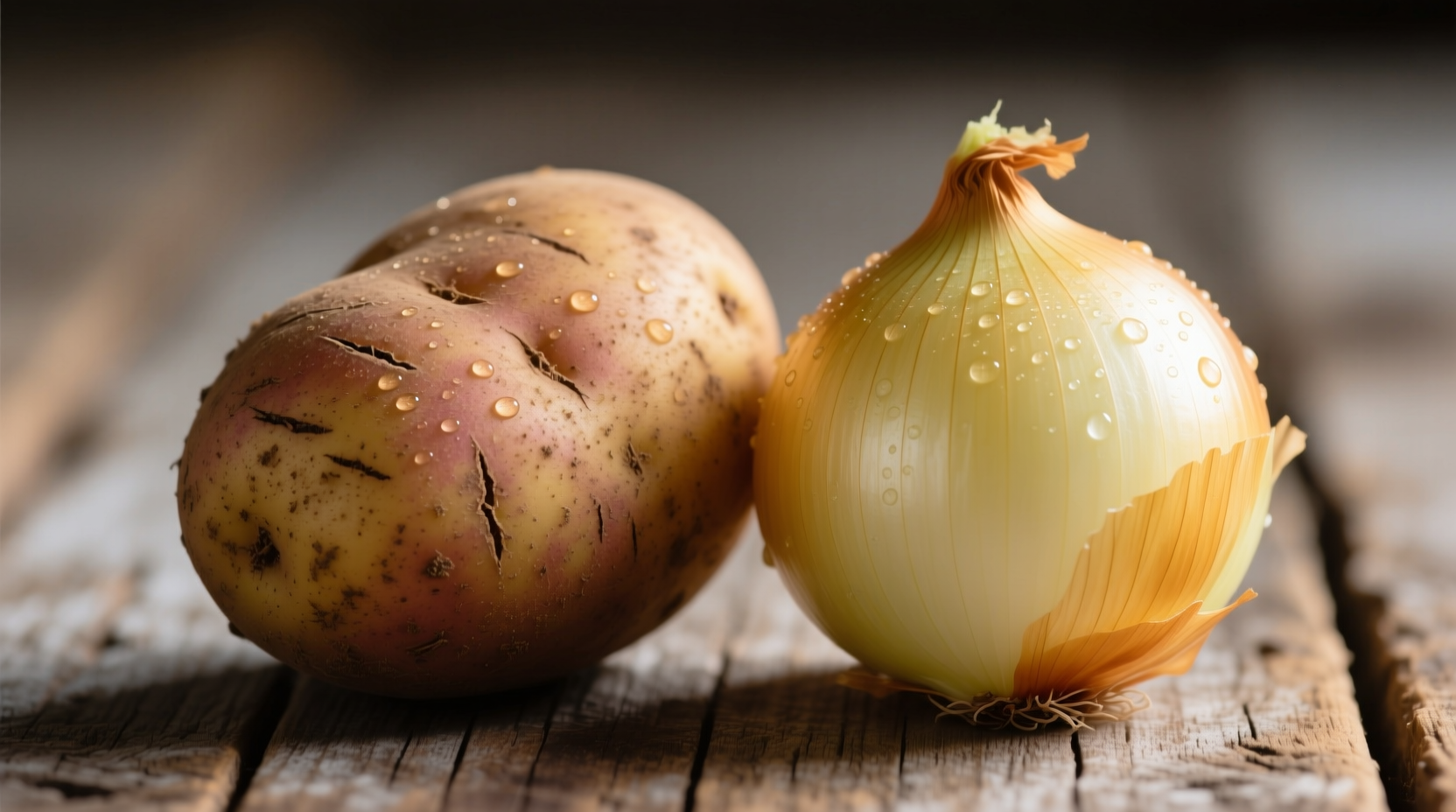What Exactly Are Potato Onions?
Despite their confusing name, potato onions aren't related to potatoes at all. These heirloom alliums, scientifically classified as Allium cepa var. aggregatum, form clusters of small to medium-sized bulbs that multiply underground. Unlike standard onions that produce single bulbs, potato onions yield multiple bulbs from one planted sets, making them incredibly efficient for home gardeners.
| Characteristic | Potato Onion | Regular Yellow Onion | Shallot |
|---|---|---|---|
| Bulb Formation | Clusters of 5-12 bulbs | Single large bulb | Clusters of 3-6 bulbs |
| Flavor Profile | Mild, slightly sweet | Strong, pungent | Delicate, subtle |
| Storage Life | 6-8 months | 4-6 months | 3-4 months |
| Planting Season | Fall or early spring | Spring | Fall or spring |
Historical Journey of Potato Onions
Potato onions have traveled across continents for centuries, establishing themselves as a staple in European kitchen gardens before making their way to North America. According to agricultural historians at the USDA National Institute of Food and Agriculture, these multiplier onions were commonly grown in colonial America but gradually disappeared from mainstream agriculture as commercial single-bulb varieties dominated the market.

Why Gardeners Are Rediscovering This Heirloom Variety
Modern gardeners are increasingly turning to potato onions for several compelling reasons:
- Exceptional hardiness - They withstand harsh winters better than many other onion varieties
- Space efficiency - Produce multiple bulbs in the space of one regular onion
- Low maintenance - Require minimal care once established
- Natural pest resistance - Fewer issues with common onion pests
Research from Cornell University's College of Agriculture and Life Sciences shows potato onions demonstrate remarkable adaptability to various soil conditions, making them ideal for beginner gardeners. Their ability to multiply season after season with minimal intervention has earned them the nickname "the lazy gardener's onion."
Planting and Cultivation Guide
For best results, plant potato onions in well-drained soil with full sun exposure. The optimal planting window varies by climate zone:
- Cold climates (zones 3-5): Plant in early fall (4-6 weeks before first frost)
- Moderate climates (zones 6-7): Plant in late fall or early spring
- Warm climates (zones 8-10): Plant in mid to late winter
When planting, position the bulbs with the pointed end up, about 2-3 inches deep and 6-8 inches apart. Unlike regular onions, potato onions don't require frequent watering once established. The University of Vermont Extension recommends applying a balanced organic fertilizer when green shoots first appear in spring.
Culinary Applications and Flavor Profile
Potato onions offer a distinctive culinary advantage with their balanced flavor profile. They provide the aromatic depth of onions without overwhelming pungency, making them versatile across cooking methods:
- Raw applications - Excellent in salads and salsas with less bite than regular onions
- Roasting - Develop rich caramelized sweetness when roasted whole
- Pickling - Their firm texture holds up beautifully in vinegar-based preserves
- Soup bases - Create subtle flavor foundations without dominating other ingredients
Chef Sophie Dubois notes that European chefs particularly value potato onions for their ability to maintain structural integrity during slow cooking while imparting complex flavor. "In French country cooking," she explains, "potato onions are preferred for traditional pot-au-feu because they dissolve just enough to thicken the broth while retaining distinct flavor pockets."
Proper Storage Techniques for Maximum Shelf Life
The true advantage of potato onions emerges during storage. Follow these professional techniques to maximize their shelf life:
- Cure properly - After harvesting, dry bulbs in a well-ventilated area for 2-3 weeks
- Trim carefully - Cut tops to 1 inch and roots to ¼ inch after curing
- Store in optimal conditions - Keep in mesh bags at 32-40°F (0-4°C) with 65-70% humidity
- Check regularly - Remove any bulbs showing signs of spoilage to prevent spread
According to storage trials conducted by the USDA Agricultural Research Service, properly cured potato onions maintain quality for 6-8 months, significantly outperforming many commercial onion varieties. This extended shelf life makes them particularly valuable for homesteaders and seasonal gardeners.
Nutritional Benefits Worth Noting
While all onions offer health benefits, potato onions provide specific nutritional advantages. Research published in the Journal of Agricultural and Food Chemistry indicates that multiplier onions contain higher concentrations of certain beneficial compounds compared to standard varieties:
- Enhanced levels of quercetin, a powerful antioxidant
- Higher sulfur compound content supporting cardiovascular health
- Rich in vitamin C and chromium, which helps regulate blood sugar
- Contains prebiotic fibers that support gut health
These nutritional properties remain stable throughout their extended storage period, unlike some vegetables that lose nutrients over time.
Common Questions About Potato Onions
Many gardeners and cooks have specific questions about incorporating potato onions into their routines. Here are answers to the most frequently asked questions:











 浙公网安备
33010002000092号
浙公网安备
33010002000092号 浙B2-20120091-4
浙B2-20120091-4